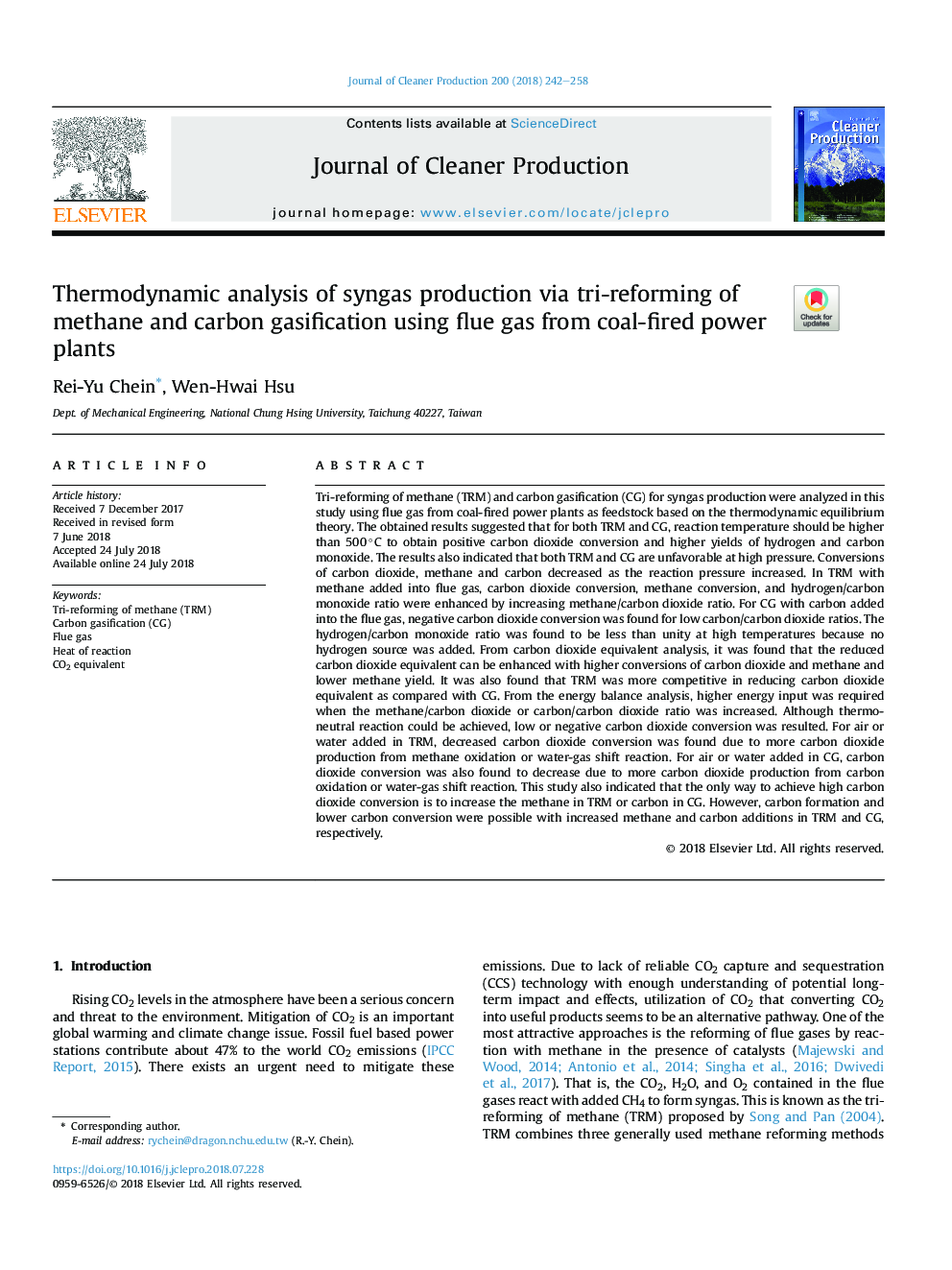| کد مقاله | کد نشریه | سال انتشار | مقاله انگلیسی | نسخه تمام متن |
|---|---|---|---|---|
| 8093075 | 1522052 | 2018 | 17 صفحه PDF | دانلود رایگان |
عنوان انگلیسی مقاله ISI
Thermodynamic analysis of syngas production via tri-reforming of methane and carbon gasification using flue gas from coal-fired power plants
ترجمه فارسی عنوان
تجزیه و تحلیل ترمودینامیکی تولید همزمان گاز با استفاده از سه روش اصلاح گازاژن متان و کربن با استفاده از گاز دودکش از نیروگاه های زغال سنگ
دانلود مقاله + سفارش ترجمه
دانلود مقاله ISI انگلیسی
رایگان برای ایرانیان
موضوعات مرتبط
مهندسی و علوم پایه
مهندسی انرژی
انرژی های تجدید پذیر، توسعه پایدار و محیط زیست
چکیده انگلیسی
Tri-reforming of methane (TRM) and carbon gasification (CG) for syngas production were analyzed in this study using flue gas from coal-fired power plants as feedstock based on the thermodynamic equilibrium theory. The obtained results suggested that for both TRM and CG, reaction temperature should be higher than 500â¯Â°C to obtain positive carbon dioxide conversion and higher yields of hydrogen and carbon monoxide. The results also indicated that both TRM and CG are unfavorable at high pressure. Conversions of carbon dioxide, methane and carbon decreased as the reaction pressure increased. In TRM with methane added into flue gas, carbon dioxide conversion, methane conversion, and hydrogen/carbon monoxide ratio were enhanced by increasing methane/carbon dioxide ratio. For CG with carbon added into the flue gas, negative carbon dioxide conversion was found for low carbon/carbon dioxide ratios. The hydrogen/carbon monoxide ratio was found to be less than unity at high temperatures because no hydrogen source was added. From carbon dioxide equivalent analysis, it was found that the reduced carbon dioxide equivalent can be enhanced with higher conversions of carbon dioxide and methane and lower methane yield. It was also found that TRM was more competitive in reducing carbon dioxide equivalent as compared with CG. From the energy balance analysis, higher energy input was required when the methane/carbon dioxide or carbon/carbon dioxide ratio was increased. Although thermoneutral reaction could be achieved, low or negative carbon dioxide conversion was resulted. For air or water added in TRM, decreased carbon dioxide conversion was found due to more carbon dioxide production from methane oxidation or water-gas shift reaction. For air or water added in CG, carbon dioxide conversion was also found to decrease due to more carbon dioxide production from carbon oxidation or water-gas shift reaction. This study also indicated that the only way to achieve high carbon dioxide conversion is to increase the methane in TRM or carbon in CG. However, carbon formation and lower carbon conversion were possible with increased methane and carbon additions in TRM and CG, respectively.
ناشر
Database: Elsevier - ScienceDirect (ساینس دایرکت)
Journal: Journal of Cleaner Production - Volume 200, 1 November 2018, Pages 242-258
Journal: Journal of Cleaner Production - Volume 200, 1 November 2018, Pages 242-258
نویسندگان
Rei-Yu Chein, Wen-Hwai Hsu,
